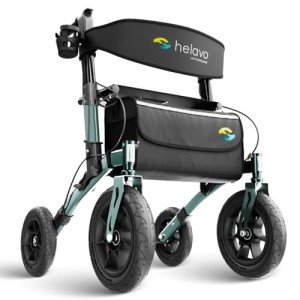Understanding Bariatric Walkers: A Comprehensive Guide
As the population ages and the occurrence of weight problems increases, the need for adaptive mobility help, such as bariatric walkers, has risen substantially. These specialized walkers are developed to support heavier individuals, offering security, stability, and mobility. In this blog site post, we will explore the numerous aspects of bariatric walkers, including their benefits, features, types, and considerations for use, guaranteeing you have a thorough understanding of this vital mobility aid.
What is a Bariatric Walker?
A bariatric walker is a type of mobility aid specifically designed to support people who are overweight or overweight. Unlike mouse click the following web site , bariatric walkers are constructed with enhanced products and features to offer increased toughness, stability, and weight-bearing capability. They are a vital tool to improve mobility, independence, and security for people undertaking rehabilitation or those with chronic health conditions.
Key Features of Bariatric Walkers
Bariatric walkers come geared up with various features customized to the needs of bigger individuals. Here are a few of the essential features one can expect:
| Feature | Description |
|---|---|
| Weight Capacity | Generally supports in between 300 to 600 pounds |
| Frame Construction | Made from robust materials like aluminum or steel |
| Adjustable Height | Height can be adapted to accommodate numerous users |
| Wide Base | Wider base for improved stability and balance |
| Hand Grips | Padded, ergonomic grips for convenience |
| Wheels | Can have 2 or four wheels for mobility choices |
| Accessories | May consist of a seat, storage basket, or tray |
Kinds Of Bariatric Walkers
When considering a bariatric walker, it's crucial to understand the different types available:
Two-Wheel Bariatric Walker
- Features a lightweight frame with two front wheels.
- Perfect for users requiring minimal assistance while walking.
Four-Wheel Bariatric Walker
- Uses more mobility and often includes a seat.
- Suggested for users requiring more support and the alternative to rest.
Rolling Walker
- Comparable to four-wheel walkers but generally includes a braking system.
- Offers much easier navigation for larger people.
Dual-Function Walkers
- Integrates features of conventional walkers and rollators.
- Suitable for users seeking flexibility in mobility choices.
Walker with Seat
- Enables users to rest throughout walks, an important feature for those with limited endurance.
Advantages of Using Bariatric Walkers
The advantages of using a bariatric walker extend beyond mobility. A few of the most considerable benefits include:
- Increased Safety: With tough building and construction and enhanced stability, bariatric walkers minimize the threat of falls and injuries.
- Enhanced Mobility: Users can regain self-reliance, moving about their homes and neighborhoods more conveniently.
- Enhanced Confidence: With the ability to move safely, individuals frequently experience an increase in self-esteem and confidence.
- Helping Rehabilitation: Essential for physical therapy and rehab, helping with motion and recovery.
- Weight Distribution: Designed to support a bigger weight distribution successfully, they promote better posture and balance.
Factors to consider When Choosing a Bariatric Walker
Picking the right bariatric walker is crucial for making sure security and comfort. Here are some important elements to think about:
- Weight Capacity: Always check the maximum weight limit to guarantee the walker can accommodate the user's weight safely.
- Height Adjustability: Select a walker with adjustable heights to accommodate the user's stature.
- Foldability: Consider a foldable walker for easy transport and storage.
- Wheel Size and Type: Depending on the walking surface area, bigger wheels may help with smoother motion over bumps and shifts.
- Storage Options: Additional features like baskets or trays can be important for bring individual products.
Frequently Asked Questions about Bariatric Walkers
Q: How do I understand if a bariatric walker is best for me?A: Consult a healthcare professional or physiotherapist, who can evaluate your needs and recommend the most ideal mobility aid. Q: Can bariatric walkers be utilized outdoors?A: Yes, numerous bariatric walkers are developed for indoor and outdoor use, particularly those with bigger wheels. Q: How much do bariatric walkers typically cost?A: Prices can differ commonly, usually ranging from ₤ 100 to ₤
400, depending upon the features and brand. Q: Is assembly required
for bariatric walkers?A: Some models come pre-assembled, while others may require basic assembly. Constantly inspect the product description. Q: How do I preserve my bariatric walker?A: Regularly check
the walker for loose parts, ensure wheels and brakes function correctly, and tidy it regularly to keep it in ideal
condition. Bariatric walkers play a pivotal role in improving mobility and promoting independence for much heavier individuals. With different styles, features, and considerations, it is vital to find the
ideal walker that fits the user's specific requirements. By understanding the info described in this guide, users and caregivers can make informed choices to facilitate more secure and more comfortable mobility. As individuals seek the very best services for mobility difficulties, the bariatric walker remains a reliable and essential option for promoting an active and independent way of life, paving the
method for enhanced quality of life.

